Genus Zygaena Rank Subspecies | ||
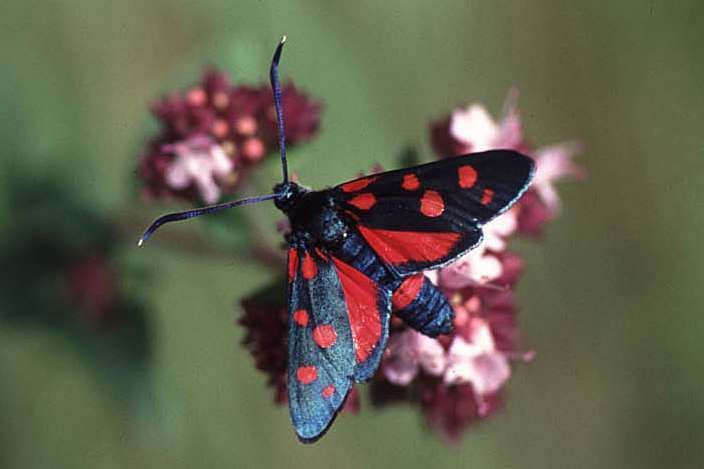 | ||
Similar Zygaena, Zygaena loti, Zygaena purpuralis, Zygaena carniolica, Zygaena transalpina | ||
Widderchen zygaena ephialtes blutstr pfchen
Zygaena ephialtes is a species of moth in the family Zygaenidae. There is no common English name, but it is a type of burnet moth.
Contents
- Widderchen zygaena ephialtes blutstr pfchen
- Scelionidae egg parasitoid infecting eggs from zygaena ephialtes
- Subspecies
- Distribution
- Habitat
- Description
- Polymorphism
- Biology
- References
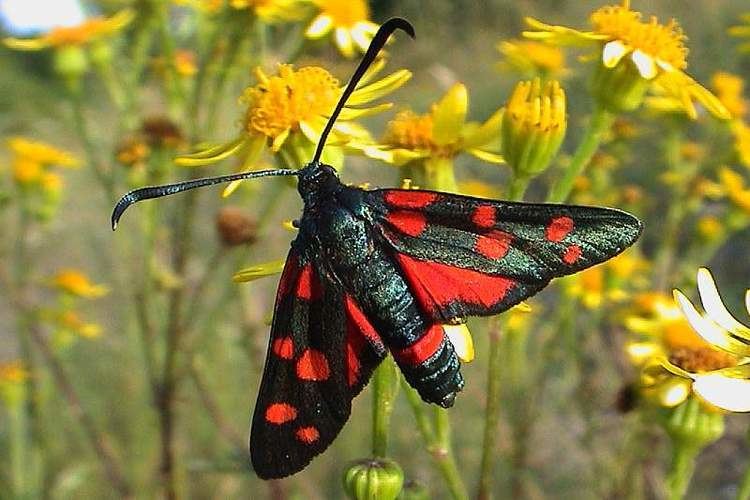
Scelionidae egg parasitoid infecting eggs from zygaena ephialtes
Subspecies
Subspecies within this species:
Distribution
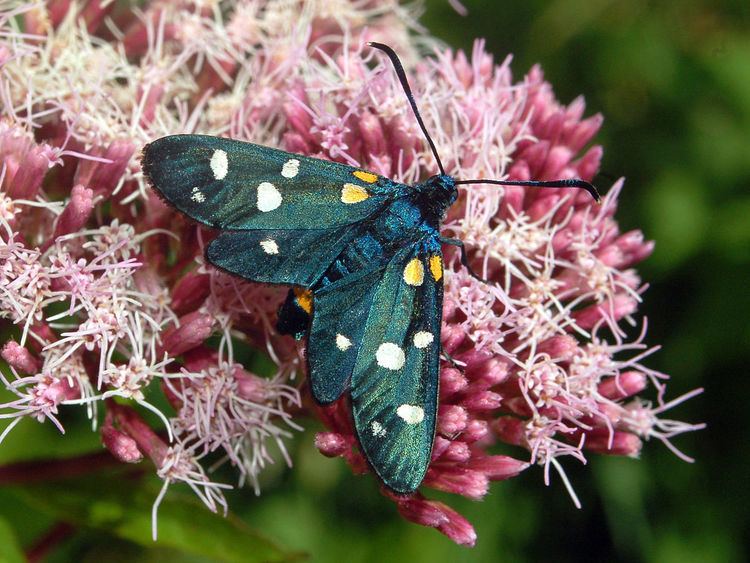
This species can be found in most of Europe, except Ireland, Great Britain, the Netherlands, Portugal, Fennoscandia, Denmark, Estonia and Latvia. In Italy is generally called prete (priest).
Habitat
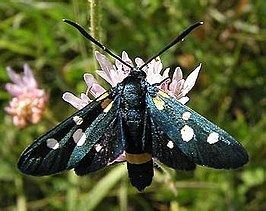
The moths are found preferentially where the food plants of the caterpillars occur in larger stocks, such as railway embankments and roadsides, and in any case only on limestone soils, grasslands and sparse forests. Warm, dry areas and sunny slopes are also preferred.
Description
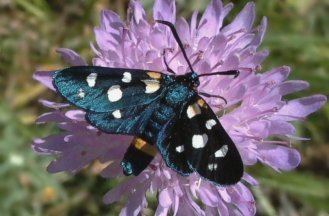
Zygaena ephialtes has a wingspan reaching 35–40 millimetres (1.4–1.6 in). The forewings are dark blue, with five or six spots very variable in the color, as they may be red, yellow or white. Usually these spots are red, while the ring segment (belt) on the abdomen may be yellow or red. The hindwings are red, yellow or completely black and have a delicate, black outer edge.
The caterpillars are about 22 millimeters long. They have a greenish-yellow basic color and carry longitudinal lines of black dots and square patches. Eggs are pale green, while pupa are yellow brown.
Zygaena ephialtes is unpalatable to birds. Amata phegea imitates its appearance (Müllerian mimicry). Both moths are examples of aposematism.
Polymorphism
This moth is a polymorphic species having different mimetic forms. There is an ephialtoid form similar in coloration to the genus Amata of tiger moths (Arctiidae) (see Amata phegea). They are characterized by white spots on the upper wing surface and the wear a yellow ring segment. In contrast, the peucedanoid form is similar to the six-spot burnet (Zygaena filipendulae). They have five or six red spots on the upper wing surface and have a red body ring.
These features are genetically fixed. The populations and subspecies occur on these allelic combinations in different proportions. The dominant alleles are peucedanoid and dominate in the ephialtoid form.
Biology
The moths fly in one generation from early July to August. The caterpillars can be found in September and after hibernation until June of next year. The females lay their eggs on the food plants of the caterpillars. In most cases, the caterpillar overwinters several times until it finally pupates in a long, silver-white web on stems or shrubs.
The larvae feed mainly on the vetches Coronilla varia and Coronilla emerus, but also on the wild thyme (Thymus serpyllum), horseshoe vetch (Hippocrepis comosa) and other types of clover (Trifolium), speedwell (Veronica (plant)) and plantain (Plantago).
